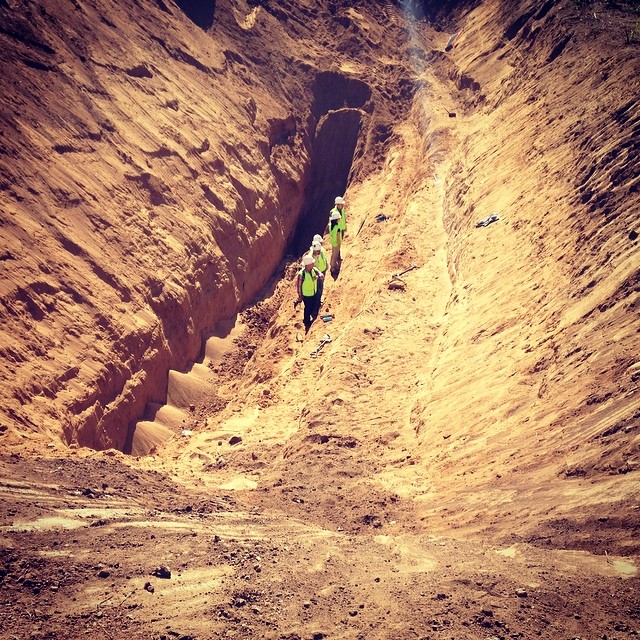Hollywood fault on:
[Wikipedia]
[Google]
[Amazon]
 The Hollywood fault is an
The Hollywood fault is an
 The Hollywood fault is an
The Hollywood fault is an active fault
An active fault is a fault that is likely to become the source of another earthquake sometime in the future. Geologists commonly consider faults to be active if there has been movement observed or evidence of seismic activity during the last 10,0 ...
of approximately in length located along the northern edge of the Los Angeles basin
The Los Angeles Basin is a sedimentary basin located in Southern California, in a region known as the Peninsular Ranges. The basin is also connected to an anomalous group of east-west trending chains of mountains collectively known as the Tr ...
. It is part of a system of seismically active folds and faults that constitute the complex transition zone between the Transverse
Transverse may refer to:
*Transverse engine, an engine in which the crankshaft is oriented side-to-side relative to the wheels of the vehicle
*Transverse flute, a flute that is held horizontally
* Transverse force (or ''Euler force''), the tangen ...
and Peninsular
A peninsula (; ) is a landform that extends from a mainland and is surrounded by water on most, but not all of its borders. A peninsula is also sometimes defined as a piece of land bordered by water on three of its sides. Peninsulas exist on all ...
Ranges. The Malibu Coast—Santa Monica—Hollywood fault system is the result of transtension Transtension is the state in which a rock mass or area of the Earth's crust experiences both ''extensive'' and ''transtensive'' shear. As such, transtensional regions are characterised by both extensional structures ( normal faults, grabens) and wr ...
and transpression
In geology, transpression is a type of strike-slip deformation that deviates from simple shear because of a simultaneous component of shortening perpendicular to the fault plane. This movement ends up resulting in oblique shear. It is generally ve ...
associated with rotation of the Transverse Ranges in the Cenozoic
The Cenozoic ( ; ) is Earth's current geological era, representing the last 66million years of Earth's history. It is characterised by the dominance of mammals, birds and flowering plants, a cooling and drying climate, and the current configura ...
Era. It has an established dip angle of between 70° and 90° based on surface and subsurface observations, and has experienced significant left-slip movement since the late Miocene
The Miocene ( ) is the first geological epoch of the Neogene Period and extends from about (Ma). The Miocene was named by Scottish geologist Charles Lyell; the name comes from the Greek words (', "less") and (', "new") and means "less recen ...
. Its minimum and maximum dip-slip displacement rates are estimated at 0.3 mm and 0.5 mm per year, with a strike-slip
In geology, a fault is a planar fracture or discontinuity in a volume of rock across which there has been significant displacement as a result of rock-mass movements. Large faults within Earth's crust result from the action of plate tectonic ...
displacement rate of 0.3–0.6 mm per year which together suggest an annual oblique slip rate of between 0.5 mm and 0.6 mm.
Although it has never produced a significant earthquake in recorded history, if the fault eventually ruptures by itself its size and geology could produce a quake with a magnitude
Magnitude may refer to:
Mathematics
*Euclidean vector, a quantity defined by both its magnitude and its direction
*Magnitude (mathematics), the relative size of an object
*Norm (mathematics), a term for the size or length of a vector
*Order of ...
of between 5.8 and 6.5 every 1,600 years or so. However, if the Hollywood fault is, in fact, a continuation of the somewhat larger nearby Raymond Fault
The Raymond Fault is a fault across central Los Angeles County and western Ventura County in Southern California.
San Gabriel Valley area
The eastern end of the Raymond Fault branches from the San Andreas Fault in the San Gabriel Mountains ...
, the combined strength of a rupture along both faults could produce a quake with a magnitude of as much as 7.0, though such an event would likely happen only once every 3,000 to 5,000 years.
References
{{California Faults Seismic faults of California Geography of Los Angeles County, California Geology of Los Angeles County, California Strike-slip faults